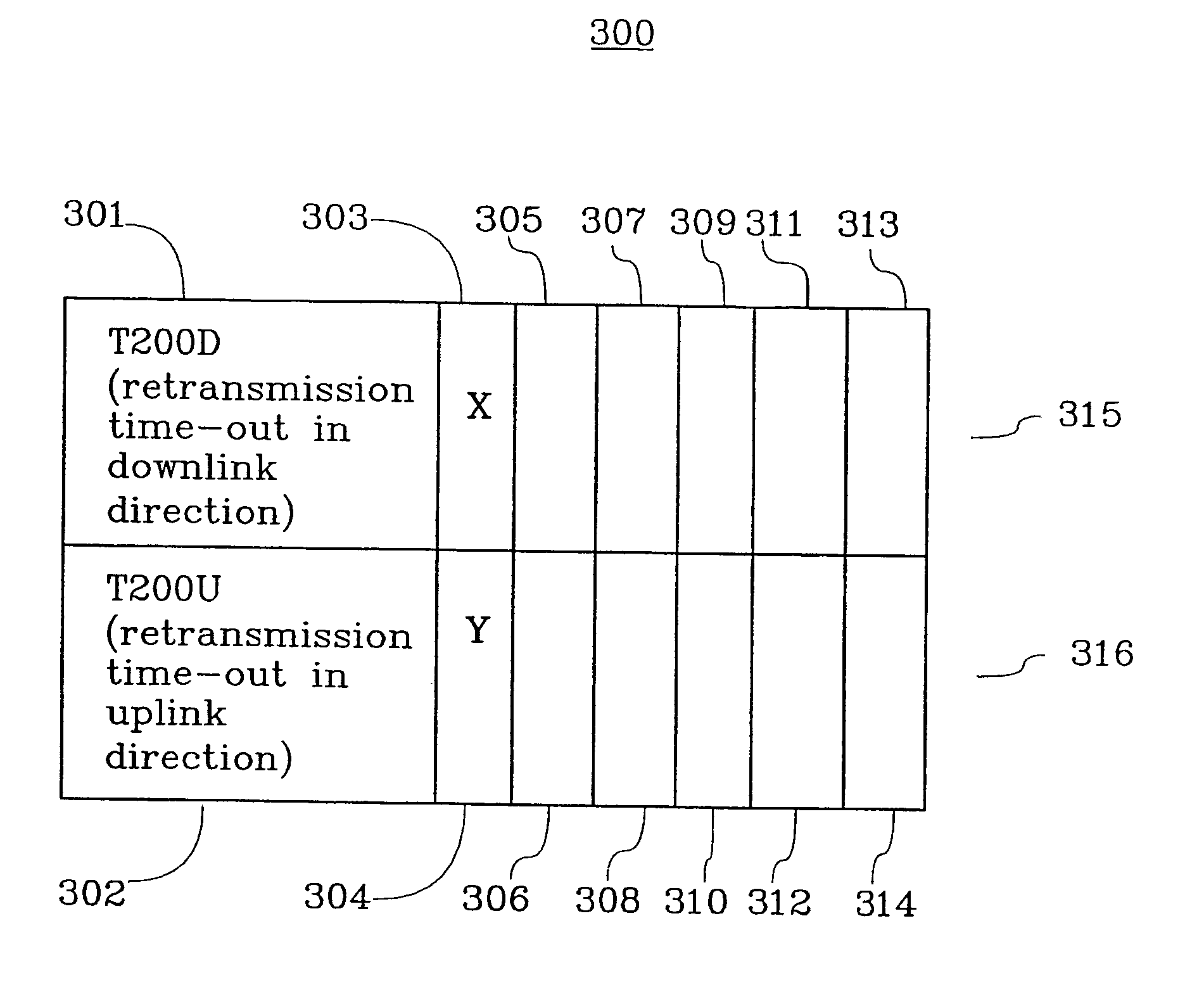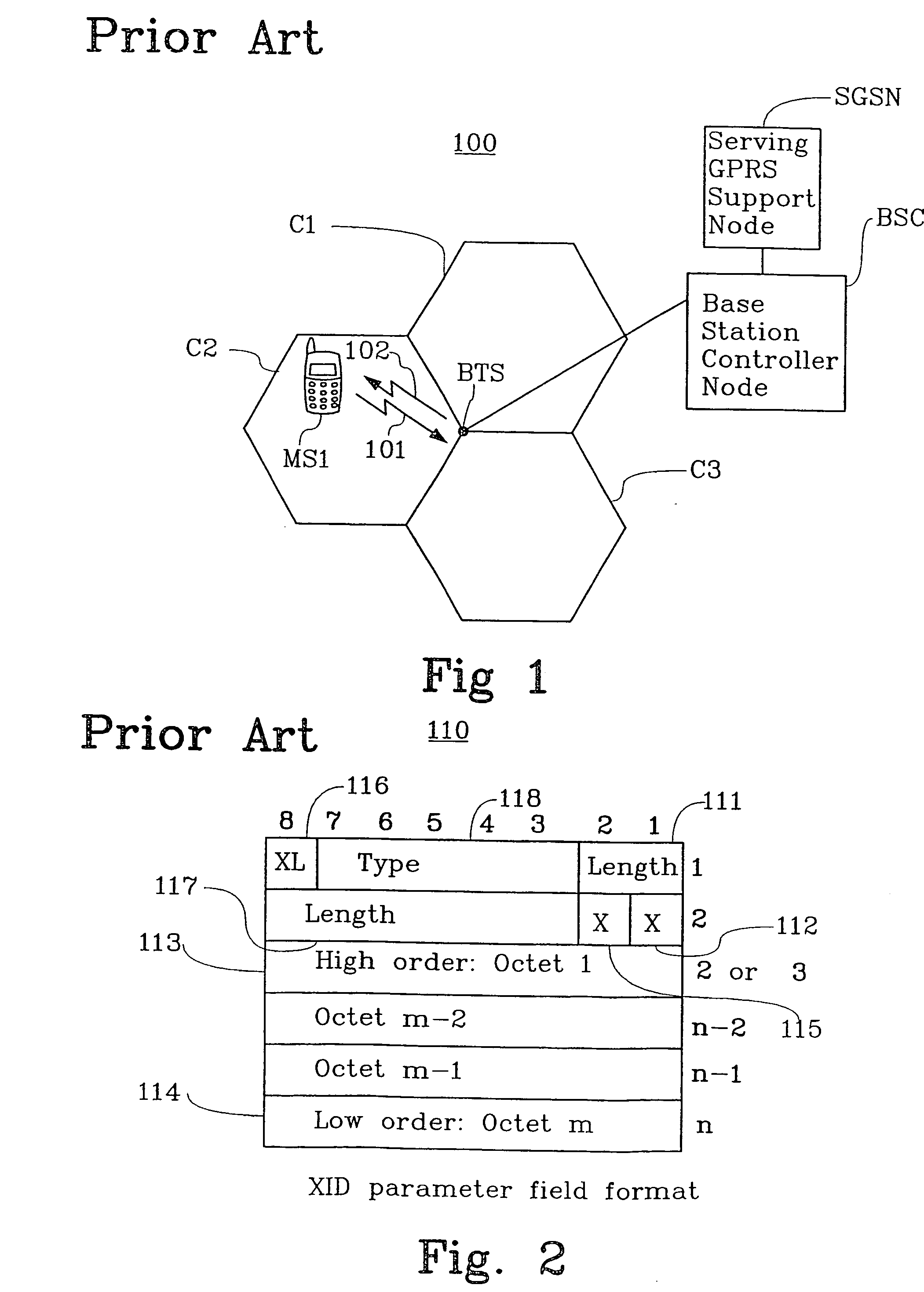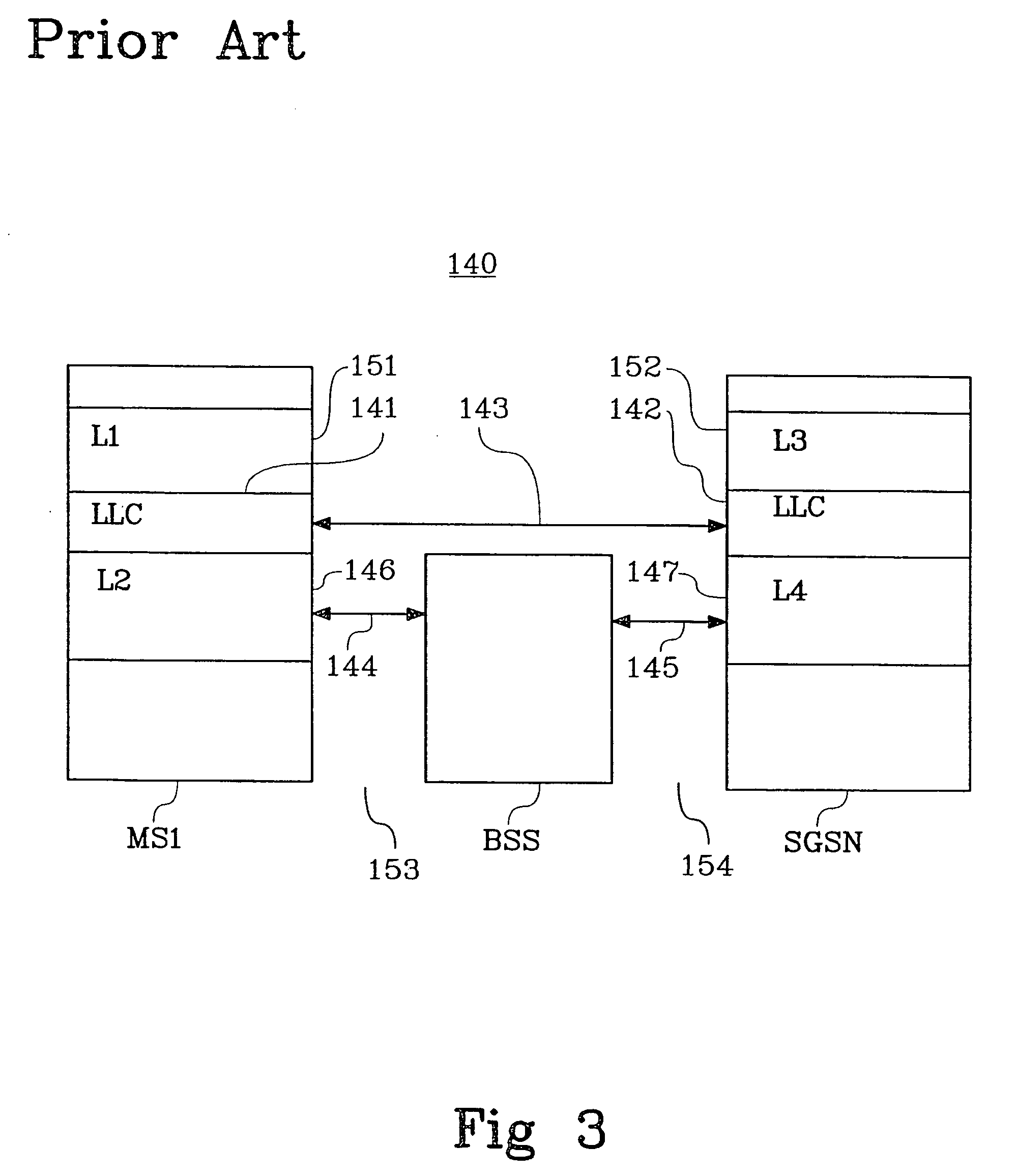Method of improving the performance between one mobile station and a base station by selective setting of the retransmission time-out values
- Summary
- Abstract
- Description
- Claims
- Application Information
AI Technical Summary
Benefits of technology
Problems solved by technology
Method used
Image
Examples
Embodiment Construction
[0022] FIG. 1 illustrates a part of a mobile cellular radio system 100 in which the inventive method is applied. In this example the mobile station MS1 communicates with the base transceiver station BTS via an air interface. The communication is done uplink 101, that is from MS1 to BTS and downlink 102, that is from BTS to MS1. The MS1 can be in any cell in a public land mobile network (PLMN). BTS is connected to the base station controller node BSC via e.g. a fixed network or a satellite link. BSC is connected to the serving GPRS support node SGSN via e.g. a fixed network. The BSC and the BTS belongs to a system called the base station system (BSS). It is assumed that the bandwidth over the air interface, between MS and BSC will vary depending on e.g. MS location in the cell C1. It is also assumed that the MS can be in any cell, which in this example are C1, C2 and C3.
[0023] FIG. 2 illustrates the XID (Exchange Identification) parameter fields format 110, described in the ETSI docu...
PUM
 Login to View More
Login to View More Abstract
Description
Claims
Application Information
 Login to View More
Login to View More - R&D
- Intellectual Property
- Life Sciences
- Materials
- Tech Scout
- Unparalleled Data Quality
- Higher Quality Content
- 60% Fewer Hallucinations
Browse by: Latest US Patents, China's latest patents, Technical Efficacy Thesaurus, Application Domain, Technology Topic, Popular Technical Reports.
© 2025 PatSnap. All rights reserved.Legal|Privacy policy|Modern Slavery Act Transparency Statement|Sitemap|About US| Contact US: help@patsnap.com



